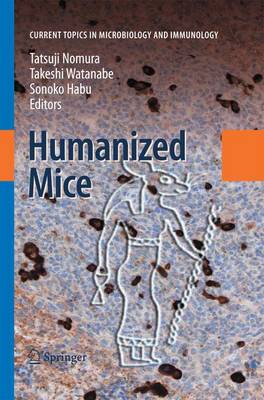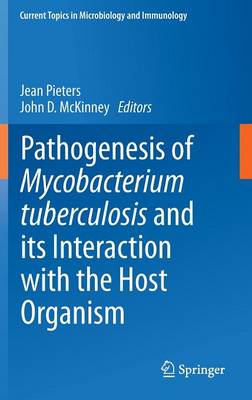(To see other currencies, click on price)
MORE ABOUT THIS BOOK
Main description:
The papers in this book were presented at the 6th Workshop on Mechanisms in B-Cell Neoplasia, held in Bethesda, March 23-25, 1988. On alternate years this meeting is sponsored by the . ;. Basel Institute of Immunology in Basel, Switzerland and by the National Cancer Institute in Bethesda, and is attended by 100 to 150 parti cipants. This 6th workshop, like the preceding five, was characterized by intense and enthusiastic discussion which reflects, we think, the exciting growth and development of this field. It is quite clear, however, that despite many general advances an understanding of the precise underlying mechanisms in B-cell tumor development is not yet defined. Probably, there is no single mechanism for all the various forms of B-cell neo plastic development. Many different forms of B-cell neoplasms are known, and these are distinguished by several characteristics: 1) the stage of development attained by the tumor stem cells; 2) mode of growth (slow or fast); 3) association with natural or inductive etiologic agents and 4) specific and consistent mutational mechanisms such as retroviral insertion, chromosomal rearrangement. Those charac teristic forms which arise naturally in relatively high frequency or those tumors with hallmark properties which can be induced consistently are the models most frequently studied, e. g. , endemic Burkitt's lymphoma, follicular lymphoma, acute and chronic lymphocytic leukemia and mUltiple myeloma in man; bursal lymphoma in chickens; Abelson virus induced pre B cell lymphomas and plasmacytomas in mice and immunocytomas in rats. Each model system, has special problems and advantages.
Contents:
I: Pathogenetic Mechanisms.- Early B Cell Tumors.- B Cell Precursors in Bone Marrow: In Vivo Proliferation, Localization, Stimulation by Activated Macrophages and Implications for Oncogenesis.- Lymphoid-Restricted Stem Cells.- Recombinant Interleukin-7 Supports the Growth of Normal B Lymphocyte Precursors.- Mac-1+ Bone Marrow Cells Include Precursors of B Cells and T Cells.- Molecular Characterization of a Transforming Retrovirus Involved in Pre-B Cell Lymphomas.- In Vitro Transformation of Murine Bone Marrow Cells with a v-raf/v-myc Retrovirus Yields Clonally Related Mature B Cells and Macrophages.- Closely Related BCR/ABL Oncogenes Are Associated with the Distinctive Clinical Biologies of Philadelphia Chromosome Positive Chronic Myelogenous and Acute Lymphocytic Leukemia.- The Pathogenesis of Tumors Induced by Helper Virus-Free Abelson Murine Leukemia Virus.- The Development of Three Distinct Avian B Cell Lymphomas.- Bursal Stem Cells as Targets for myc-Induced Preneoplastic Proliferation and Maturation Arrest.- Molecular Analysis, of an AIDS-Associated Burkitt's Lymphoma: Near-Identity with Endemic Cases.- B Cell and Plasma Cell Tumors.- Transgenic Mouse Models for Hematopoietic Tumorigenesis.- Genetic Studies on E-myc Transgenic Mice.- Differential Expression of myc-family Genes During Development: Normal and Deregulated N-myc Expression in Transgenic Mice.- Plasmacytoma Induction by J Series of v-myc Recombinant Retroviruses: Evidence for the Requirement of Two (raf and myc) Oncogenes for Transformation.- Synergy of an IgH Promoter-Enhancer-Driven c-myc/v-Ha-ras Retrovirus and Pristane in the Induction of Murine Plasmacytomas.- The Genetics of Susceptibility to RIM-Induced Plasmacytomagenesis.- Significance of Chromosome 8 Breakpoint Location in Burkitt's Lymphoma: Correlation with Geographical Origin and Association with Epstein-Barr Virus.- B Cell Proliferation in Follicles, Germinal Centre Formation and the Site of Neoplastic Transformation in Burkitt's Lymphoma.- Altered Growth Phenotype of a Burkitt's Lymphoma Line Following the Introduction and Stable Expression of the EBNA 2A Gene.- Soluble CD23/BLAST-2 (S-CD23/Blast-2) and Its Role in B Cell Proliferation.- Burkitt's Lymphoma Variant Translocations: Distribution of Chromosomal Breakpoints and Perturbated Regulation of a Mutated c-myc Gene.- Differentiation Associated c-myc Expression in Phorbol Ester and Lymphokine Stimulated B-Type Chronic Lymphocytic Leukemia Cells.- B and T Cell Responses Induced by Interleukin-6.- II: Studies of B Cell Relevant Oncogenes.- c-myc.- Prediction of a Dimerization Surface Common to a New Class of Sequence-Specific DNA Binding Proteins.- Immunological Probes in the Analysis of myc Protein Expression.- The Replication Activity of SV40 DNA Correlates with the Level of c-myc Expression in Human Tumor Cell Lines.- Elevated Levels of the c-myc Protein in Bloom's Syndrome and Induction of c-myc by DNA Strand Breakage.- Deregulation of the c-myc and N-myc Genes in Transformed Cells.- Stimulation of the Antigen Receptor Complex Leads to Transcriptional Activation of the c-myc Gene in Normal Human T Cells.- A Repressor of c-myc Transcription Is Found Specifically in Plasmacytomas.- Regulation of c-myc Gene Transcription in B Lymphocytes: Mechanisms of Negative and Positive Control.- Multifactorial Regulation of the Human c-myc Oncogene.- Negative Control Elements Within and Near the Murine c-myc Gene.- Disruption of the Putative c-myc Auto-Regulation Mechanism in a Human B Cell Line.- Deregulated Expression of an Activated Allele of Human c-myc in Transfected Fibroblast Cultures.- Comparison of c-, N-, and L-myc Transcriptional Regulation.- Delivery of c-myc Antisense Phosphorothioate Oligodeoxynucleotides to Hematopoietic Cells in Culture by Liposome Fusion: Specific Reduction in c-myc Protein Expression Correlates with Inhibition of Cell Growth and DNA Synthesis.- Different Biological Effects of c-myc and H-ras Oncogene Expression in EBV-Infected Human Lymphoblasts.- c-abl.- Abrogation of IL-3 Dependence of Myeloid FDC-P1 Cells by Tyrosine Kinase Oncogenes Is Associated with Induction of c-myc.- U.R. RAPP The Abelson Protein Is Required for Initiation and Maintenance for Transformation in Murine Pre-B Cells.- c-myb.- Expression and Function of the c-myb Oncogene During Hematopoietic Differentiation.- Sense and Anti-sense Transcription in the Murine c-myb Attenuator Region.- bcl-2.- Expression of the Murine Proto-Oncogene bcl-2 Is Stage Specific and Cell-Type Specific.- Recent Progress on the Human bcl-2 Gene Involved in Follicular Lymphoma: Cheracterization of the Protein Products.
PRODUCT DETAILS
Publisher: Springer (Springer-Verlag Berlin and Heidelberg GmbH & Co. K)
Publication date: December, 2011
Pages: 354
Weight: 621g
Availability: Available
Subcategories: Biochemistry, Immunology, Oncology
From the same series
Eric Vivier
Kevin V. Morris
Esteban Domingo
Eric Vivier
Tomohiro Kurosaki
Christian Munz
Christian Munz
Michael G. Katze
Bryan R. Cullen
David S. Goodsell
G. Singh Chhatwal
Ralf Bartenschlager
Ellen Heber-Katz
Andreas Rummel
Juan J. Lafaille
Thomas E. Shenk
Ben Adler
Michael B. A. Oldstone
Friedrich Koch-Nolte
Marco Falasca
Michael B. A. Oldstone
Benhur Lee
Freddy Radtke
Klaus Aktories
Jean Langhorne
Michael B. A. Oldstone
Jeremy Nuttall
Robert N. Eisenman
Z F Fu
Peter K. Vogt
Tatsuji Nomura
Wilfried Ellmeier
Marc Daeron
H. Koprowski
Hilary Koprowski
Simon Fillatreau
G. Balakrish Nair
Harris G. Fienberg
Michael B. A. Oldstone
R.M.E. Parkhouse
Lars B. Olding
Charles L. Sawyers
Cornelis Murre
Nicholas Mantis
Pamela A. Kozlowski
Charles E. Samuel
Larry J. Anderson
Kenneth Palmer
Marcel B.M. Teunissen
Rudolf Valenta
M.B.A. Oldstone
Thomas Boehm
Cesare Montecucco
Michael B.A. Oldstone
Hubert Hilbi
Hilary Koprowski
Hung Y. Fan
Walter Doerfler
Polly Roy
Michael Karin
Bryan R. Cullen
Glenn Dranoff
Rafi Ahmed
Jurgen A.. Richt
Ulrich Dobrindt
Ellen Heber-Katz
G. Singh Chhatwal
Ralf Bartenschlager
Peter K. Vogt
Robert L. Coffman
Michael G. Katze
Harald Stenmark
Andreas Rummel
Christian Rommel
Fritz Melchers
H. Koprowski
Didier Trono
Uwe Gross
Christian Rommel
M. Celeste Simon
John E. Johnson
K. Takada
Ellen Heber-Katz
C. Schmaljohn
Axel Rethwilm
Jerry L. Workman
Louis B. Justement
Marco Falasca
P.K. Vogt
Michael N. Hall
M.B.A. Oldstone
K. Hirai
Eric Vivier
Allison Abendroth
Oystein Bruserud
Carolyn Wilson
Freddy Radtke
Benhur Lee
Klaus Aktories
Harald Zur Hausen
J.S. Mackenzie
Adrienne E. Clarke
Stefan H.E. Kaufmann
Bernhard Fleischer
Michael Potter
H. Koprowski
H. Koprowski
Rolf Jessberger
Charles L. Sawyers
Chihiro Sasakawa
Vojo Deretic
Alan L. Rothman
Marco Colonna
H. Koprowski
Karl Maramorosch
H. Koprowski
Eckhard R. Podack
Paul Spearman
Takashi Saito
H. Koprowski
W. Doerfler
Michael Loos
H. Koprowski
Daniel Kolakofsky
H. Koprowski
H. Koprowski
Michael Potter
Kenneth I. Berns
H. Koprowski
J. Lindsay Whitton
Fritz Melchers
Nicholas Mantis
Cornelis Murre
Pamela Kozlowski
Klaus Aktories
Fritz Melchers
O. Haller
Peter K. Vogt
Norman L. Letvin
Dan R. Littman
Michael Potter
Robert F. Ramig
Gillian M. Griffiths
H. Koprowski
David Gray
T.A. Trautner
Michael B. A. Oldstone
Jiri Mestecky
Richard W. Moyer
Fritz Melchers
Michael B. A. Oldstone
Guido Kroemer
Hilary Koprowski
H. Koprowski
Peter K. Vogt
Bruce W. Chesebro
Charles J. Parker
P.J. Sansonetti
H. Koprowski
Rolf Knippers
Walter Doerfler
Klaus Jann
Virginia L. Miller
Marie H. Kosco-Vilbois
Peggy J. Farnham
Peter M Schlag
Thomas M. Shinnick
Hilary Koprowski
Anthony J. Pawson
Walter Doerfler
Peter K. Vogt
Klaus Jann
Vincent R. Racaniello
Nicholas Muzyczka
Mark Bothwell
Volker Ter Meulen
Jean-Pierre Kraehenbuhl
Michael B. A. Oldstone
P.H. Hofschneider
Steinunn Baekkeskov
H. Koprowski
F. Melchers
Garnett Kelsoe
Arthur E. Frankel
Michael B. A. Oldstone
Michael B. A. Oldstone
Peter Sarnow
Hermann Wagner
Rudolf Rott
H.L. Robinson
John J. Holland
Jeffrey L. Dangl
Richard W. Compans
Charles Mackay
Beat A. Imhof
H. Koprowski
P.K. Vogt
H. Koprowski
P.A. Bachmann
P.K. Vogt
W. Doerfler
H. Koprowski
P.K. Vogt
Leslie Hudson
Michael Potter
Fritz Melchers
Michael B. A. Oldstone
William S. Mason
Peter K. Vogt
H. Koprowski
P.K. Vogt
Melvin J. Bosma
James K. McDougall
Stefan H.E. Kaufmann
N.J. Dimmock
Peter K. Vogt
Michael B. A. Oldstone
Walter Orenstein
Hans-Georg Krausslich
Fritz Melchers
Christa E. Muller-Sieburg
John D. Lambris
Siamon Gordon
Hermann Wagner
H. Koprowski
Hilary Koprowski
D.B. Willis
Walter Doerfler
A. J. Shatkin
P.K. Vogt
Christopher J. Paige
Michael Potter
Michael B. A. Oldstone
W. Doerfler
Henry C. Wu
Hermann Wagner
Michael B. A. Oldstone
H. Koprowski
H. Koprowski
H. Koprowski
H. Koprowski
Barry T. Rouse
H. Koprowski
Fritz Melchers
H. Koprowski
H. Koprowski
H. Koprowski
H. Koprowski
Charles E. Samuel
F. Melchers
H. Koprowski
H. Koprowski
H. Koprowski
Hans-Dieter Klenk
David W. Weiss
U.H. Koszinowski
Ernst-L. Winnacker
Steven Tracy
L. Du Pasquier
Michael B. Kastan
H. Wagner
Fritz Melchers
Ursula Gunthert
T. Ulf Westblom
P.K. Vogt
Lena Claesson-Welsh
C.H. Hagedorn
Stanley B. Prusiner
Wolfgang Baumeister
Bruce Beutler
Louis B. Justement
Ursula Gunthert
Marcel B.M. Teunissen
Rudolf Valenta
Michael Karin
Glenn Dranoff
Rafi Ahmed
Inger Helene Madshus
Lyubomir T. Vassilev
Martin L. Privalsky
Walter Doerfler
Alexander Steinkasserer
Dennis R. Burton
T.M. Koehler
Jurgen A.. Richt
Walter Doerfler
David A. Harris
Yoshihiro Kawaoka
Paula M. Pitha
Branch D. Moody
Scott Dessain
James L. van Etten
Michael B. A. Oldstone
Tony Romeo
Rafi Ahmed
Steven Tracy
Harald Zur Hausen
Michael B. A. Oldstone
Thomas E. Lane
Tasuku Honjo
Marianne Manchester
Walter Doerfler
Diane E. Griffin
Mark Marsh
Alexander V. Karasev
Dorian McGavern
B. W. J. Mahy
Riccardo Dalla-Favera
Sanjeev Krishna
Patrice Boquet
Klaus Aktories
Luis Enjuanes
Christian Rommel
Christian Rommel
M. Celeste Simon
John E. Johnson
Oystein Bruserud
Allison Abendroth
Peter E. Lipsky
Walter Doerfler
Stanley A. Plotkin
John L. Casey
William M. Shafer
Esteban Domingo
Eric Vivier
Takashi Saito
Paul Spearman
Chihiro Sasakawa
Alan L. Rothman
Vojo Deretic
Walter Orenstein
Dorian McGavern
Alexander V. Karasev
Harald Zur Hausen
Michael B. A. Oldstone
Michael B. A. Oldstone
James L. van Etten
Marianne Manchester
Thomas E. Shenk
Tatsuji Nomura
Tony Romeo
Steven Tracy
Peter K. Vogt
Scott Dessain
Paula M. Pitha
D.B. Moody
Peter K. Vogt
Robert A. Weiss
Rafi Ahmed
Stanley A. Plotkin
Tasuku Honjo
Walter Doerfler
William M. Shafer
John L. Casey
Peter E. Lipsky
Thomas E. Lane
Robert N. Eisenman

































































































































































































































































































































































































































